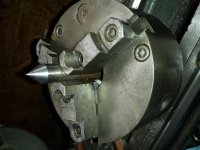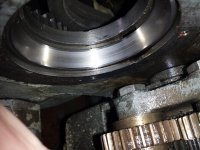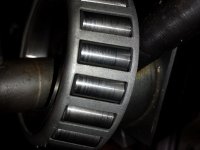I know this sounds pompous and condescending, but here's from a fellow with over 50 years as an all-around manual machinist of widely diversified experience, a journeyman level trade instructor who's taken several factory bearing classes among others, and served several years as a machine tool rebuilder: spindle bearings if adjusted properly are the last thing to go wrong in a machine tool. They are easily the most accurate and robustly designed elements that can be stuffed into the available space. Spindle bearings sell the machine: it's the last place a machine tool manufacturer will scrimp.
Certainly the spindle bearings should be checked as a matter of course when evaluating a machine tool new or used for purchase or annually as part of the PM program. Unless they have been through a building fire, flooded under water, suffered careless contamination (tool post grinding followed by a compressed air blow-down, for example) or suffered a catastrophic failure as a result of being dropped inverted from a crane to land on the spindle casting itself it is doubtful the bearings are at fault. None of these failure modes will result in actual chatter.
Chatter is very seldom a bearing problem unless the pre-load adjustment has been slacked off by a criminal amount. Spindle bearings are the scape-goat of last resort for inexplicable machining problem; problems whose origins are usually within control of the man on the machine. If he were to step back, look at the whole problem, examine all the variables, then forget about it overnight if time is an affordable luxury, or, if not, get involved in something else for a time. The object is to let the very much cleverer subconscious mind solve the problem the analytical mind cannot.
I bet you will find the solution among the usual suspects: tool overhang, part flexibility, work support, tool geometry, etc.
Then there is the question of what is "chatter" All unwanted indications in a turned surface are not chatter. There is "telegraphing" where the shadowy unmeasurable suggestion of a spindle gear tooth count, tick marks from a damaged gear tooth, etc registers in the turned finish. There is "phonographing" where machine vibrations are recorded by the tool feed marks in the turned surface - single phase motors a frequent culprit in smaller lathes. Irregularities caused by failing rolling element bearings; this problen has too many visible manifestations to go into here but they are rare and only grossly exhibit in the final stages of bearing failure.
There are other causes of finish defects but in the parts manufacturing world, "chatter" in a machined finish results from self-excited oscillation in a mass/compliance couple such as an extended boring bar, a keen edged tool, limber part, and part material having suitable characteristics. The same phenomina are at work in a bowed violin string. The components of a self excited oscillation are mass, compliance, exitation, and resisting these are damping. Changing any one of these factors changes the chatter or eliminates it.
Many solutions leading to elimination of chatter are available to the canny worker: increasing the feed rate (increasing damping), reducing RPM (reducing exitation), shortening overhang (raising resonant frequency), changing tool geometry (reducing exitation), supporting the part (increasing damping and/or increasing resonant frequency). Sometines it's enough to lean a no-bounce hammer against the work or touch the top of the tool with the end of a copper rod, or hang a thick heavy washer on the end of the boring bar.











